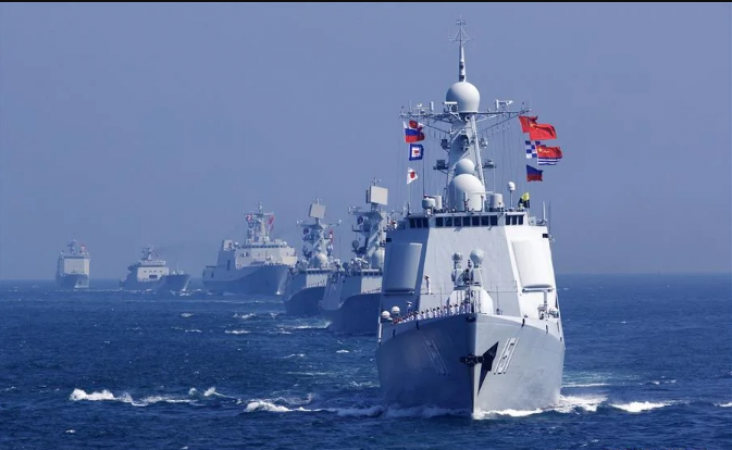
In a display of strategic alignment, China and Russia conducted joint military exercises in the South China Sea on September 8-9, 2023, involving over 10,000 troops, numerous ships, and aircraft. These maneuvers, conducted near the disputed Paracel Islands, have raised concerns among the United States and its allies, who view them as potentially destabilizing to the region.
The exercises were held in waters claimed by both China and Vietnam, adding complexity to an already contentious situation. While China maintains that these exercises are routine and non-threatening, their timing is significant. They occur amidst escalating tensions between China and the United States, primarily concerning issues related to Taiwan and broader regional influence.
The joint military exercises encompassed a wide spectrum of activities, including live-fire drills, air defense exercises, and anti-submarine warfare exercises. Furthermore, Chinese and Russian warships and aircraft undertook coordinated patrols in the South China Sea. These exercises are part of an ongoing series of joint military activities between China and Russia, underscoring the deepening military collaboration between the two nations.
Also Read: Nigerian Appeals Court Upholds President Bola Tinubu's Election Victory Amidst Challenges
China and Russia's decision to conduct joint exercises in the South China Sea carries profound implications for regional security dynamics. Firstly, it conveys a clear message that these nations are willing to cooperate in safeguarding their interests within the region. Secondly, it serves as a cautionary signal to the United States and its allies, emphasizing the evolving military capabilities of China and Russia.
The joint exercises are part of a broader trend of deepening military cooperation between China and Russia in recent years. The maneuvers in the South China Sea underscore the strategic alignment between the two nations and further strengthen their collaborative stance. While both nations maintain that their military cooperation is not directed against any specific country, it cannot be divorced from the broader geopolitical context.
The international response to the joint exercises has been diverse, reflecting the complexity of regional relationships. Vietnam, which has territorial claims in the South China Sea, has expressed concerns about the exercises. Meanwhile, Russia has welcomed and supported the joint maneuvers, viewing them as a reflection of their strong bilateral ties.
Also Read: French President Calls for Russian Flag Ban at 2024 Paris Olympics Over Alleged War Crimes
The United States, on the other hand, has closely monitored the exercises and reiterated its commitment to ensuring freedom of navigation in the South China Sea. Washington has expressed concerns that these military activities could exacerbate existing tensions and hinder efforts to maintain regional stability.
The joint military exercises in the South China Sea underscore the dynamic and intricate nature of the regional security landscape. While the participating countries assert their right to conduct such exercises, it is essential to consider the potential consequences for regional stability, freedom of navigation, and the interests of neighboring nations.
The strategic maneuvers in the South China Sea must be understood within the broader context of evolving geopolitics. China's rising influence and territorial claims in the region, coupled with Russia's interest in asserting itself on the global stage, make this collaboration particularly significant. While both nations may emphasize their peaceful intentions, their actions inevitably impact the balance of power in the Asia-Pacific region
Despite the inherent tensions associated with such joint military activities, there remains the possibility for diplomatic engagement and de-escalation. Open channels of communication between China, Russia, the United States, and regional stakeholders are vital to addressing concerns, preventing misunderstandings, and maintaining regional stability.
The joint military exercises conducted by China and Russia in the South China Sea represent a pivotal development in the regional security landscape. They underscore the evolving strategic cooperation between the two nations while raising concerns among neighboring countries and the United States. As regional dynamics continue to shift, it becomes imperative for all stakeholders to pursue avenues for constructive dialogue and diplomacy, ensuring that regional peace and stability are preserved in the face of evolving geopolitical realities.